#Earlywritings
Text

Kittim’s Eschatology:
The Kittim Method
By Eli Kittim 🎓
Kittim’s eschatology is a view in biblical studies that interprets the story of Jesus in exclusively eschatological terms. This unique approach was developed by Eli of Kittim, especially in his 2013 work, “The Little Book of Revelation.” Kittim doesn’t consider Jesus' life as something that happened in history but rather as something that will occur in the last days as a fulfillment of bible prophecy. It involves a new paradigm shift! Kittim holds to an exclusive futuristic eschatology in which the story of Jesus (his birth, death, and resurrection) takes place once and for all (hapax) in the end-times. Kittim’s eschatology provides a solution to the historical problems associated with the historical Jesus.
Biographising the Eschaton: The Proleptic Eschatology of the Gospels
Kittim views God's inscripturated revelation of Jesus in the New Testament gospel literature as a proleptic account. That is to say, the New Testament gospels represent the future life of Jesus as if presently existing or accomplished. According to “The Free Dictionary,” the term “prolepsis” refers to “the anachronistic representation of something as existing before its proper or historical time.”
According to Eli Kittim, the gospels are therefore written before the fact. They are conveyed from a theological angle by way of a proleptic narrative, a means of biographising the eschaton as if presently accomplished. By contrast, Kittim’s work demonstrates that these events will occur at the end of the age. This argument is primarily founded on the authority of the Greek New Testament Epistles, which affirm the centrality of the future in Christ’s only visitation!
In the epistolary literature, the multiple time-references to Christ being “revealed at the end of the ages” (1 Pet. 1:20; cf. Heb. 9:26b) are clearly set in the future. It appears, then, that the theological purpose of the Gospels is to provide a fitting introduction to the messianic story beforehand so that it can be passed down from generation to generation until the time of its fulfillment. It is as though New Testament history is written in advance. It is therefore thought advisable, according to Kittim, to consider the collection of New Testament writings as strikingly futurist books.
The Epistolary View of Christ
The Epistles contradict the Gospels regarding the timeline of Christ’s birth, death, and resurrection by placing it in eschatological categories. The Epistolary authors deviate from the Gospel writers in their understanding of the overall importance of eschatology in the chronology of Jesus. For them, Scripture comprises revelations and “prophetic writings” (see Rom. 16:25-26; 2 Pet. 1:19-21; Rev. 22:18-19). Consequently, the Epistolary literature of the New Testament sets Christ’s birth, death, and resurrection in a different light, while apparently contradicting some of the Gospel material. Only the Epistles give us the real Jesus. Thus, in order to have a high view of scripture, one doesn’t have to accept the historicity of the Bible, or of Christianity for that matter!
Kittim’s Eschatology: The Kittim Method
Ephesians 2:4-7 alludes to a redemption established •in faith• prior to the coming of Jesus. This implies that believers in Christ can receive the Holy Spirit •retroactively• “through faith” (1 Pet. 1:3-5) based on the merits of the prophetic message revealed by God in the New Testament! Similarly, Titus 1:2-3 talks about a salvation which was promised a long time ago “but at the proper time revealed” (cf. Isa. 46:10). This is not unlike Hebrews 1:1-2 which states that Jesus speaks to humankind not in Antiquity but in the “last days” (ἐπ’ ἐσχάτου τῶν ἡμερῶν). First Peter 1:10-11 also suggests an eschatological soteriology, given that the holy spirit “predicted the sufferings of Christ.”
What is more, Second Peter 1:16-19 demonstrates that the so-called “eyewitness accounts” were actually based on visions (i.e. prophetic words) that were then written down as if they had already happened (proleptically). Similarly, Acts 3:19-21, in speaking about “the regeneration,” implies that the Messiah will not be sent to earth “until the time of universal restoration” (cf. Mt. 19:28). Put differently, the legend of Jesus precedes his arrival.
The same anachronistic (or proleptic) interpretation is brought to bear on the issue of the Messiah’s future incarnation in Revelation 12:5. Despite the fact that the reference to Christ’s birth in Revelation 12:5 is clearly future, Christian theology has, nevertheless, always maintained that it already happened. Thus, the notion of a historical Jesus does not square well with the context and content of these prophecies. In fact, according to Luke 17:30, the Son of Man has not yet been revealed (cf. 1 Cor. 1:7; Phil. 1:6; Col. 3:4; 2 Thess. 1:7; 1 Tim. 6:14; 2 Tim. 4:1; Titus 2:13; 1 Pet. 1:13; 1 Jn. 2:28). That’s precisely why the New Testament accounts of Jesus are essentially prophetic. For example, according to Revelation 19:10d, “the testimony [to] Jesus is the spirit of prophecy”!
Christ is born in the Fullness of Time
Interestingly enough, Ephesians 1:9-10 defines “the fullness of time” (τὸ πλήρωμα τοῦ χρόνου, which we also find in Galatians 4:4) as the consummation of the ages. Thus, according to Galatians 4:4, Christ will be born in the end-times! That’s why 1 Peter 1:20 (NJB) informs us that although Christ was foreknown through visions and revelations by the agency of the Holy Spirit, nevertheless he will make his one and only appearance “at the final point of time.” What is more, Hebrews 9:26b (KJV) states quite explicitly that Jesus will die for the sins of the world “in the end of the world (KJV), or “at the end of the age” (NRSV). A historical-grammatical study of the phrase ἐπὶ συντελείᾳ τῶν αἰώνων demonstrates that it refers to “the end of the world” (cf. Mt. 13:39-40, 49; 24:3; 28:20; Dan. 12:4 LXX; see also G.W.H. Lampe [ed.], “A Patristic Greek Lexicon” [Oxford: Oxford U, 1961], p. 1340)!
Christ’s Death and Resurrection at the End of the Age
In the Greek NT, Romans 5:6 intimates with hardly any ambiguity that Christ “died” (ἀπέθανεν) at some unspecified time of human history by using the phrase κατὰ καιρὸν, which means “at the right time” (cf. 1 Tim. 2:6), or at “the proper time,” and does not necessarily warrant a reference to history. Similarly, Isaiah 2:19 offers us a markedly different interpretation concerning the timing of the LORD’s resurrection, namely, as an event that takes place in the end time. Isaiah does not simply say that “the LORD” rises, only to quickly evanesce, but that he “rises to terrify the earth.” In other words, there’s no 2,000 year gap between the LORD’s resurrection and judgment day. What is often overlooked in Isaiah 2:19 when doing exegetical work is the significance of the Hebrew term קוּם (qum), which is rendered in English as “rises,” and is often used in the Bible to mean “resurrection” (see e.g. Job 14:12; Isa. 26:19; Mk 5:41). Astoundingly, the LXX translates it as ἀναστῇ (i.e. resurrection). The word ἀναστῇ (e.g. Mk 9:9; Lk. 16:31) is a derivative of ἀνίστημι, which is the root word of ἀνάστασις and means to “raise up” or to “raise from the dead.”
There is biblical support for this conclusion in Daniel 12:1-2. For instance, the end-time death and resurrection of “the great prince” in Daniel 12:1 (παρελεύσεται Dan OG 12:1 LXX; ἀναστήσεται Dan Th 12:1 LXX) occur just prior to the general resurrection of the dead (Dan. 12:2). Similarly, “Christ the first fruits” is said to be the first to rise from the dead during the future general resurrection of the dead in 1 Corinthians 15:23. This is confirmed in Zephaniah 1:7 in which the Lord’s sacrificial-death takes place during “the day of the Lord”!
Conclusion
Exegetes must interpret the implicit by the explicit and the narrative by the didactic. In practical terms, the NT Epistles and other more explicit and didactic portions of Scripture must clarify the implicit meaning and significance of the Gospel literature. Accordingly, this paper argues that the Epistles are the primary keys to unlocking the future timeline of Christ’s only visitation.
——-
#historical jesus#septuagint#ελικιτίμ#DidJesusExist#historicalJesusStudies#theJesusprophecy#Earlywritings#thelittlebookofrevelation#bible translations#EK#EliofKittim#bible_exegesis#biblical_criticism_and_history_forum#Christian_texts_and_history_forum#endoftheage#Kittimbiblicalsystem#What_if_the_crucifixion_of_Christ_is_a_future_event#early_christianity#bible prophecy#thefutureincarnationofChrist#end of days#Kittimeschatology#ΤοΜικροΒιβλιοτηςΑποκαλυψης#academic_bible#thefullnessoftime#bible interpretation#Kittimsystematictheology#Συντέλειατουκόσμου#Kittimtheology#biblicaleschatology
5 notes
·
View notes
Link
#coloring #essay #pages #writing #essaytemplate #earlywriting #creativeactivity #parenting #teaching #lowpressure #learning #introduction #bodyparagraphs #topic #theme #animals #toys #activities #friends #family #interests #motivation #essaystructure #introductionparagraph #bodyparagraphheadings #conclusion #handwriting #spelling #sentencelength #followupactivities #artproject
0 notes
Note
Hi witches!
So I hated...well, strongly disliked the magical realism/fantasy genre in books. But the talented writers in this fandom have changed my mind quite a bit over the past week. Uhm...anyway, could you please rec some D&P fics with hints of magic/time travel/fantasy, etc. I know (at least imo), @mostlyinthemorning is like the master at this. So...maybe a couple of theirs and a smattering of everything else?
Thanks so much!!
We love to hear you're giving new things a chance! This fandom has incredibly gifted writers in all kinds of genres/tropes, we're spoiled!
We've definitely got some suggestions for you:
Fall Off a Bridge, Please - @hagface
for feelings unbound - wardo_wedidit
i bury my heart (i hope it's a seed, i hope it works) - 1031
I Walked through Hell to Find Home - alldaydream (@maybewecandreamalittle)
If Dreams Were Lightning and Thunder Was Desire - houdini74 (@mostlyinthemorning)
in hell, there's no bellman - @dinnfameron
Leaning In - @dinnfameron
Make a Wish - @agoodpersonrose
Mr. Universe - @likerealpeopledo-on-ao3, @vivianblakesunrisebay
on a night like this - dessertwaffles
pivotal moment, perpetual bliss - @dinnfameron
Pot o' Gold - @ahurston
Room Nine is a Wormhole- @stereopticons
There's an Interdimensional Portal in Room One - @landofsonlali
there's no such thing - @dinnfameron
These Dreams - houdini74 ( @mostlyinthemorning)
This Town Ain't Big Enough - houdini74 (@mostlyinthemorning)
Time After Time - Sholio
the touch of your hand - @thegrayness
Tricks & Mortar - earlylight (@earlywrites), whetherwoman
warmth of your doorway - @streetlampsunset
Witches Brewer - @vivianblakesunrisebay
37 notes
·
View notes
Text
Ooh, @codswalloping is doing a fun meme where you post the last lines of your current WIP(s), so here are mine! (Guess which fandoms for extra fun)
1 - The next few hours aren't a blur, exactly; but certain moments feel clearer than others, sharper.
2 - "Indeed, any reasonable person would assume I am no danger whatsoever," said Arabella, removing her shawl and folding it into a tidy square. "You are by far the stronger of us — larger, quicker — and more powerful in other ways, to be sure. But the trouble with magic, as I'm given to understand, is that it has no great understanding of strength or weakness. It is purely a matter of want; or as my husband says, what each person wants is what matters." She smiled. "And my want is quite the equal to any man in England."
3 - It's been a shock to learn how much of an octopus she is in bed, but he makes sure to keep his complaints half-hearted, grumbling about her cold feet or the bossy way she arranges his limbs to better suit herself. He never sleeps so well as when she's snoring in his ear or sleepily kicking him in the shins.
4 - 'You care for Lesley,' Nightingale murmured into my ear, his breath warm on my neck. 'You’ve always seen her as the person she could be. And yes, possibly your feelings blinded you to some things, but we're all susceptible to that.'
'Even you?' I asked, muffled against his collar.
'Even me,' he said, his voice low and dangerously affectionate.
5 - But from the hallway she could see the faint glow of another candle — no, a lamp, carried high by a shadowy figure. Bilbo scrambled further back, her shoulder against the wardrobe. In another moment the figure would be inside the room; she opened the wardrobe door, mercifully silent, and climbed in.
6 - "I keep coming back to that one thing you said, how my obliviousness bordered on homophobia," Ted says, squinting out against the setting sun.
"Darling, I didn’t mean—"
"I know, but maybe it wasn’t too far off." He rubs at his palms with his fingers. "Growing up here was great, I don’t want you thinking it wasn’t. But I graduated in 1993, you know? And back then, at least around here, being gay meant AIDS and getting beat up and worse than that. People around here thought they were being polite when they called them 'homosexuals.' Said it just like that, too, and whenever I heard it, I… it sounded threatening, I guess. Like something bad. And I was really afraid of bad things, you know. Afraid of being bad, being wrong. I’m not sure if I just sort of hid it away, so good that I couldn’t even find that part of myself anymore, or if I would’ve been like this regardless. But something about being back here — I guess I’m just holding onto that fear a little harder than I’d like. And I’m sorry, and I’m trying to change."
And I'd like my followers to try this out for the fun of it, but most especially @angryonabus @whetherwoman @earlywrites @queenklu @spiders-hth-is-an-outlier @praycambrian @andthepeople @themardia @laiqualaurelote
#ficcage of interest#having it all laid out like this makes it clear why these are wips#ie that the next scene I have to write is going to be DIFFICULT
25 notes
·
View notes
Text
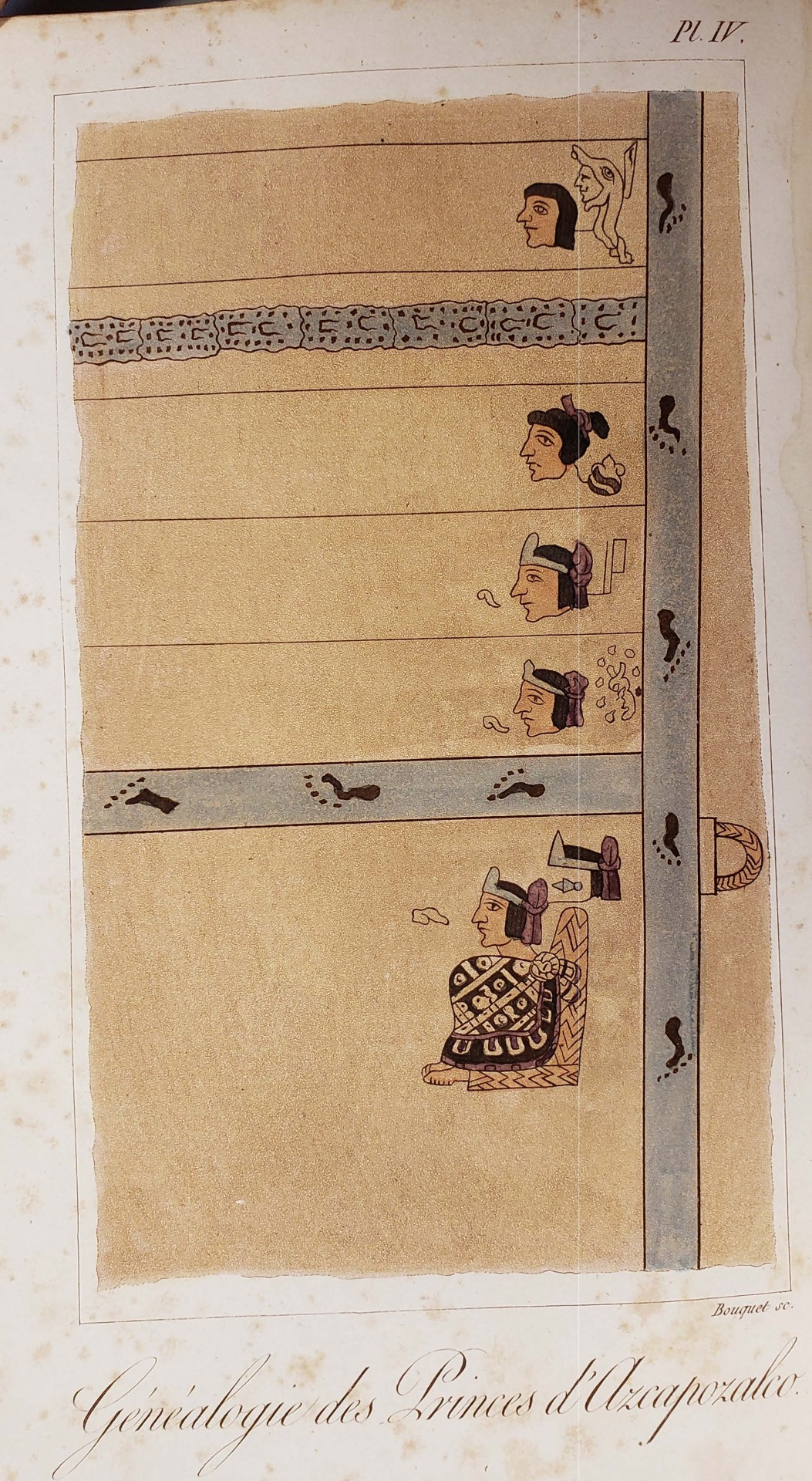
From: Humboldt, Alexander von, 1769-1859. Vues des Cordillères. Paris : Librairie grecque-latine-allemande, 1816
F1219 .H91 1816 volume 1
#pictograms#earlywriting#ancientmexico#mexico#genealogy#royals#genealogicalchart#alexandervonhumboldt#rarebooks#specialcollections#libraryofva
21 notes
·
View notes
Photo
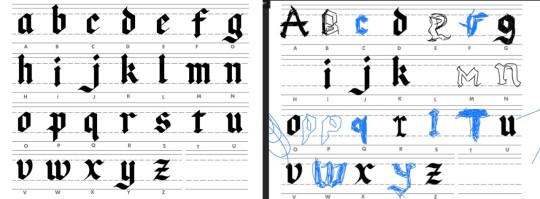
A quick activity we did in this week’s class, that I forgot to talk about in my post was an activity on the Collaborate Whiteboard function, recreating Blackletter without a reference.
We were given only a few letterforms that gave us an insight into what out assigned letter should look like. My letter was “r” and even though I think it looks like a pretty good blackletter “r”, it doesn’t quite match the variation of font we were given. This gave me an insight into all the tiny differences there are between styles of a particular font.
I really liked this fun little activity, doing it in a tricky format like with a laptop trackpad was also fun and challenging.
1 note
·
View note
Note
my OFN fic just hit 34k and i still have three more scenes to finish so i feel your pain, deeply, ugh. this was meant to be like 10k, max. shit just gets away from you!!
34k holy shit! that’s an accomplishment. you got this though. if i finished mine, you can finish yours. you’re almost there!
6 notes
·
View notes
Text
On Paper Diaries/Journals
In elementary school, I kept a "diary." It had a tiny lock on it. It was mostly filled with elementary school musings and Kevin Fiore. In middle school, my stepmom gave me a Mickey Mouse journal. I wrote in it, but I got the feeling she was reading it when I was at my mom's and I stopped writing. I took to online journals. Xanga, Myspace, Tumblr, etc.... At least, she couldn't use my words against me in cyberspace. I never quite got over it. I don't keep personal paperback diaries/journals for this exact reason. I just use journals for notes, musings, writing I wouldn't mind if someone happened to come upon. I also write painfully slow or fast and messy and my hand cramps up quickly. My left-handedness leaves me with ink up and down the side of my hand and I end up getting frustrated.
0 notes
Photo
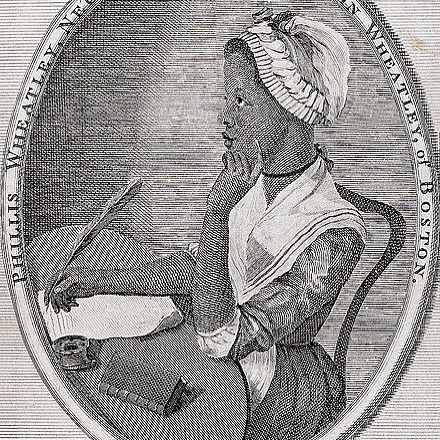
Phillis Wheatley (ca 1753–1784), born in Senegal/Gambia, was America’s first African-American poet, one of the first women to be published in colonial America--and was also the first enslaved person in the U.S. to publish a book of poetry. Scipio Moorhead--a black artist who was also enslaved--made the one surviving portrait of Wheatley. She wrote poetry about George Washington and corresponded with him; she traveled to England and met Benjamin Franklin, dedicating her second book to him. Jefferson, however, was severely critical of her work, and deemed it not poetry enough to criticize(!). Her work was published and circulated widely by abolitionists as proof of the intellectual equality of those kidnapped from the African continent. #philliswheatley #americanpoetry #womenspoetry #poetry #africanamericanhistory #earlywriters #womenwriters #overlooked #womenwhorock https://www.instagram.com/p/CDppbTinHvY/?igshid=1h5fedli9uo97
#philliswheatley#americanpoetry#womenspoetry#poetry#africanamericanhistory#earlywriters#womenwriters#overlooked#womenwhorock
0 notes
Photo



Communication Design Studies Week 4 Lecture:
Books were only available to a privileged few, as they became luxury items. I found this interesting as it contrasts highly with how books are conceived now. Books are available to anyone, some may be pricey however they are still deemed as affordable, and they are now more of an artefact of leisure, rather than a luxury. In fact, books in our generation would be regarded as the complete opposite, as the newest technology such as eBooks and iPads override the interest for physical paper books.
(left): depicts the invention of movable clay type in China which was just as durable as metal.
(middle): Europe’s first wood block printing.
(right): image of three people working on the printing press with movable metal type.
0 notes
Photo

Week 3 Lecture
Early Writing
This week’s lecture covers early writing forms from different parts of the world. Some examples of the places that were discussed were Egypt, China and Japan. I have experience in learning the Chinese and Japanese language. The Chinese writings are often created through the influence from it’s original object, for example the word eye in Chinese is taken from an eye drawing and overtime it transitioned into the writing “目“.
[Thoughts] I have never really thought how far writing and inscriptions have evolved. It was interesting to think how people had came up with the different variations of writing. I found that Chinese language is more difficult to learn since they do not have any “alphabetical” words, unlike Japanese in which they have Hiragana and Katakana. How did we humans even derive to the modern alphabet and make it essential for universal communication?
image is from the lecture
0 notes
Text

0 notes
Photo
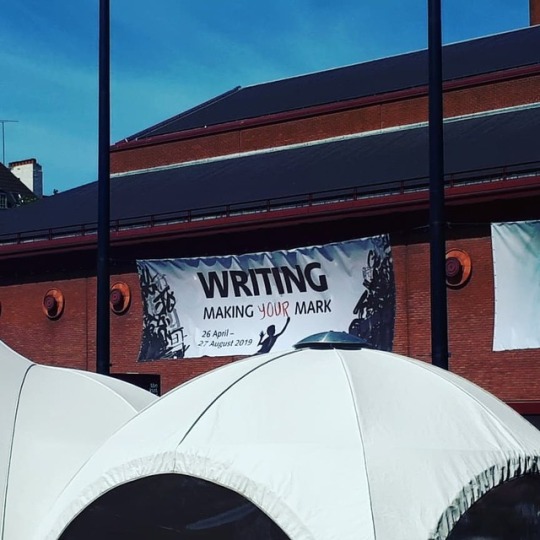
At Writing, MAKING YOUR MARK exhibition @britishlibrary . #calligraphy #london #britishlibrary #makingyourmark #exhibition #trains #stpancrasstation #earlywriting #finemotorskills (at St Pancras, London) https://www.instagram.com/p/BxcPui7DUmU/?igshid=ojs9jyt4z8u9
#calligraphy#london#britishlibrary#makingyourmark#exhibition#trains#stpancrasstation#earlywriting#finemotorskills
0 notes
Note
Hi witches!
I'm blushing over here but I'll ask :
Are there fics where Patrick (lovingly) manhandles David or vice versa ?
The only one I've found was
" You were the ocean I was the stone"
by Al ex an d er Hamilton (which is a great series, btw)
Thanks 😳😅
Friend,
There is nothing to blush about. We're happy to answer any kind of question.
We can definitely think of quite a few fics along these lines, but we'd like to suggest starting with these:
for feelings unbound - wardo_wedidit
hold me, carry me slowly, my sunlight - @streetlampsunset
holding hands with your heart… - startswithhope (@language-of-love)
I'll Light the Fire - @norskheks
Just One Night - swift_wind
maybe if by magic - earlylight (@earlywrites)
Molten glass hearts - @januarium
One Year Later - @mallpretzles
Room Six - @delilah-mcmuffin
Say My Name - EggplantSalad, @januarium, @samwhambam, @ships-to-sail, @this-is-not-nothing, @yourbuttervoicedbeau
What Happened To You? - therapychicken
15 notes
·
View notes
Photo

Final chapter is done! This beast clocked in at just under 35K which is, frankly, ridiculous, but it was a lovely story to work on, especially over the past six months which have been really tough in other areas.
Special thanks to @whetherwoman and etben for cheering this story on from start to finish, providing incredibly valuable insights and encouragement. Special thanks also to @earlywrites for her own insights as well as her incredible, beautiful and hilarious metafic You Belong With Me that is at least 37 times funnier than my original story. I’m so glad to have tricked you all into friendship.
45 notes
·
View notes
Photo
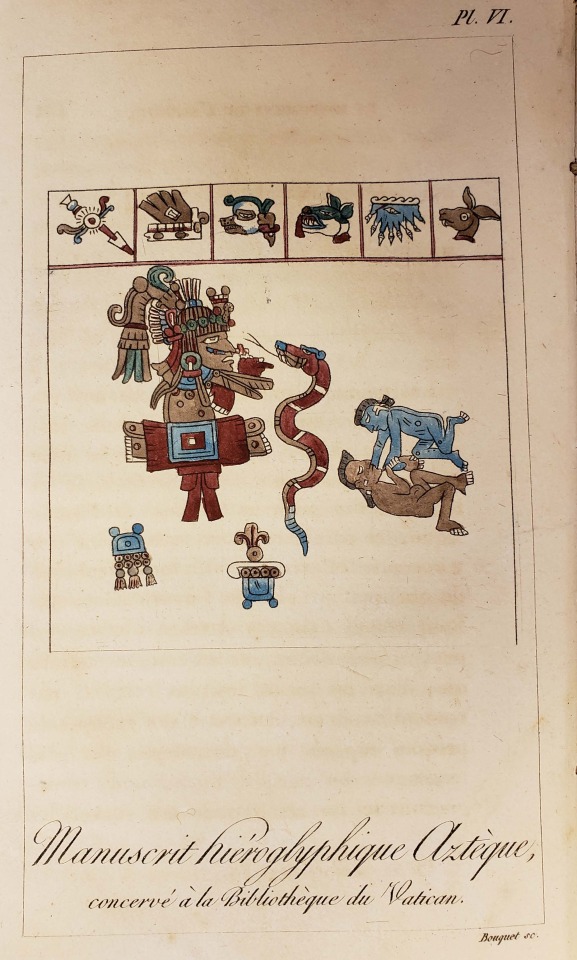
From: Humboldt, Alexander von, 1769-1859. Vues des Cordillères. Paris : Librairie grecque-latine-allemande, 1816
F1219 .H91 1816 volume 1
#pictograms#aztec#ancientmexico#earlywriting#warriors#snake#alexandervonhumboldt#rarebooks#specialcollections#libraryofva
38 notes
·
View notes